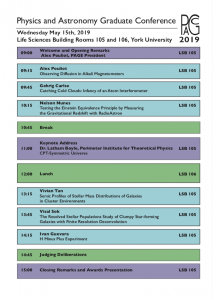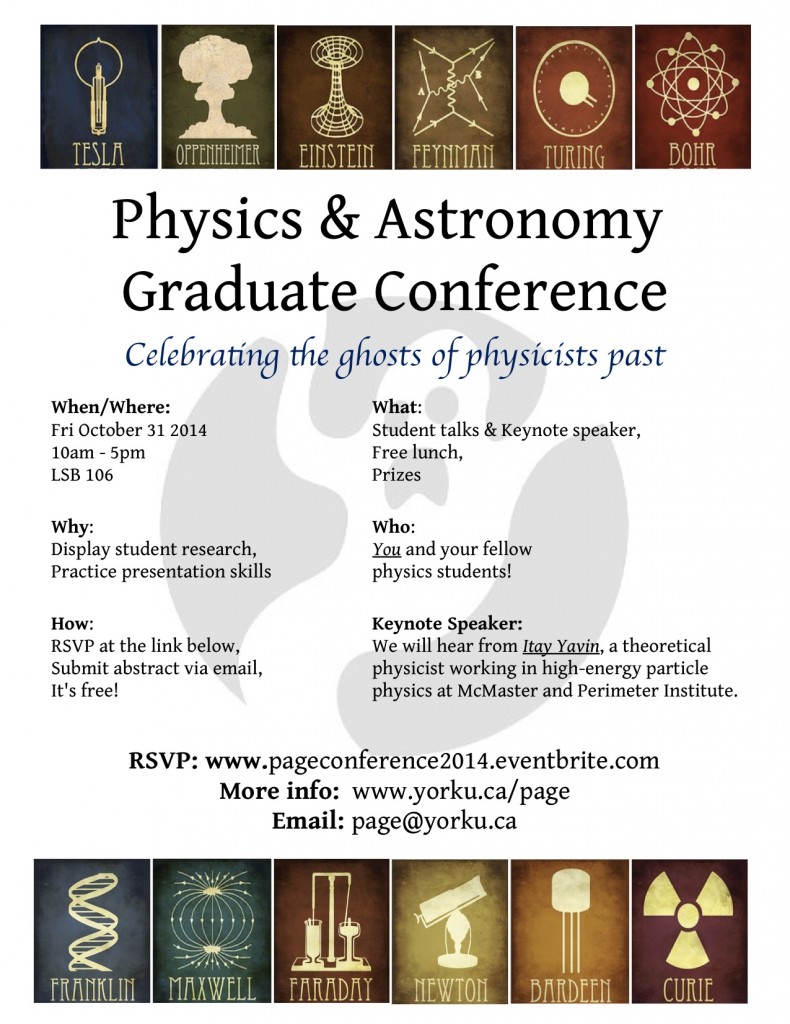We are very pleased to welcome Dr. Latham Boyle to York as this year’s keynote speaker. Please join us for his talk during the conference on Wed May 15 at 11:00am in LSB 105. Lunch will follow for all attendees at 12:00 in LSB 106.
Dr. Boyle is a faculty member at the Perimeter Institute for Theoretical Physics and will be sharing some fascinating ideas coming out of his current research.
CPT-Symmetric Universe
Abstract: I will introduce our recent proposal that the state of the universe does *not* spontaneously violate CPT. Instead, the universe after the big bang is the CPT image of the universe before it, both classically and quantum mechanically. The pre- and post-bang epochs comprise a universe/anti-universe pair, emerging from nothing directly into a hot, radiation-dominated era. CPT symmetry selects the QFT vacuum state on such a spacetime, providing a new interpretation of the cosmological baryon asymmetry, as well as an economical explanation for the cosmological dark matter. Requiring only the standard three-generation model of particle physics (with right-handed neutrinos), a Z_2 symmetry suffices to render one of the right-handed neutrinos stable. One can calculate its abundance from first principles: matching the observed dark matter density requires its mass to be 4.8 x 10^{8} GeV. Several other testable predictions follow: (i) the three light neutrinos are Majorana and allow neutrinoless double beta decay; (ii) the lightest neutrino is massless; and (iii) there are no primordial long-wavelength gravitational waves. The proposal also has interesting things to say about the strong CP problem and the observed electrodynamic arrow of time.
(Based on arXiv:1803.08928 and arXiv:1803.08930 with Kieran Finn and Neil Turok, and forthcoming work.)

